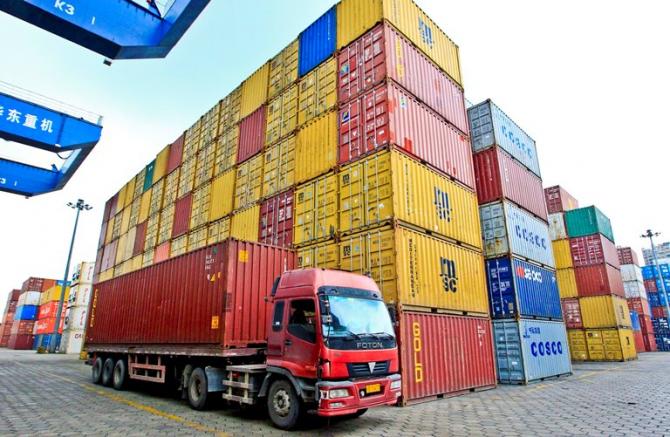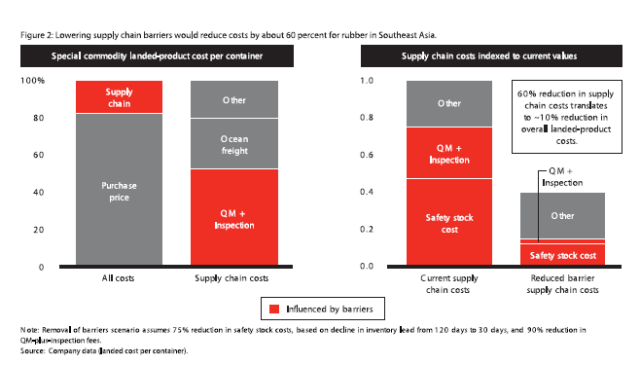

The message is that supply chain barriers can significantly upset conventional cost and revenue calculations. For instance, Bain estimates that addressing supply chain barriers would reduce supply chain costs by 60 percent for rubber in Southeast Asia and result in 10 percent lower total landed costs (see Figure 2).
Most companies involved in cross-border trade have become experts in standard return- on-investment analysis to justify investments abroad. They know how to evaluate tax breaks, labor costs, capital expenses and the costs associated with logistics, sourcing equipment and finding raw materials. But often these traditional analyses fall short when it comes to capturing the true cost of doing business.
Breaking down the costs
Over the years, Bain has worked with many companies that were weighing the merits of trading with Mexico or moving production there, especially after the North American Free Trade Agreement ended most formal trade barriers on the continent. While a traditional analysis might show that Mexico has a 25 percent cost advantage relative to the US and Canada, more than half of that advantage could be eliminated by supply chain friction costs. In doing the analysis, we’ve been able to quantify those costs and how they affect a company’s real return on investment.







%20resized.png)
